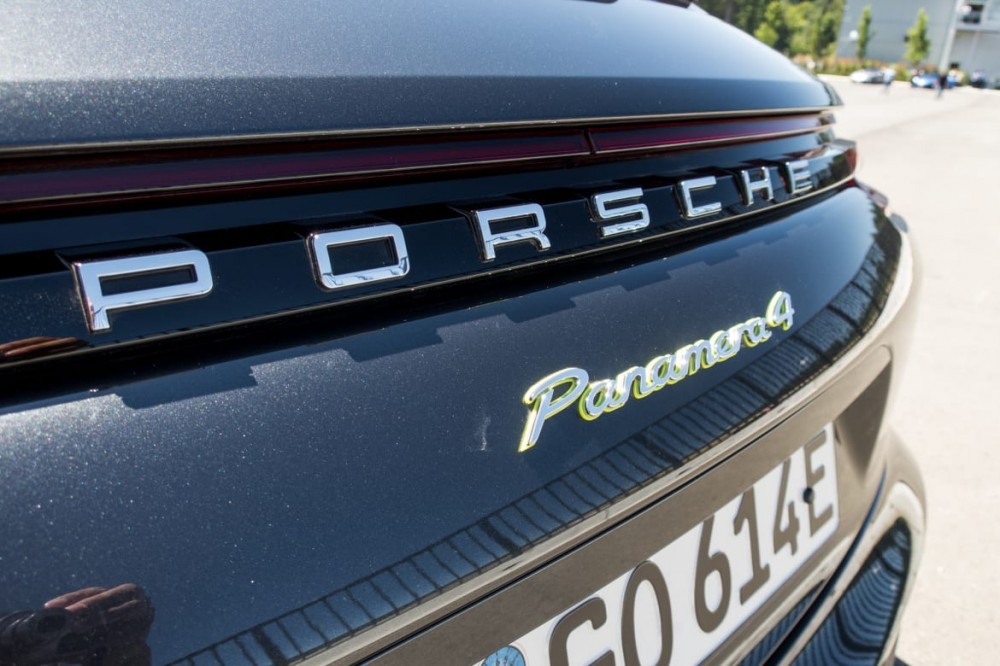CARS.COM — A year after a full Panamera redesign for the 2017 model year, Porsche is introducing a new body style to the mix for 2018 that will have the wagon aficionados scrambling — the 2018 Panamera Sport Turismo.
Related: 2018 Porsche Panamera Sport Turismo Review: Photo Gallery
I drove two of the four Panamera Sport Turismo variants with very different powertrains: the Turbo and the 4 E-Hybrid, which is a new generation of the plug-in hybrid. It also comes in Panamera 4 and 4S trim levels with less power.
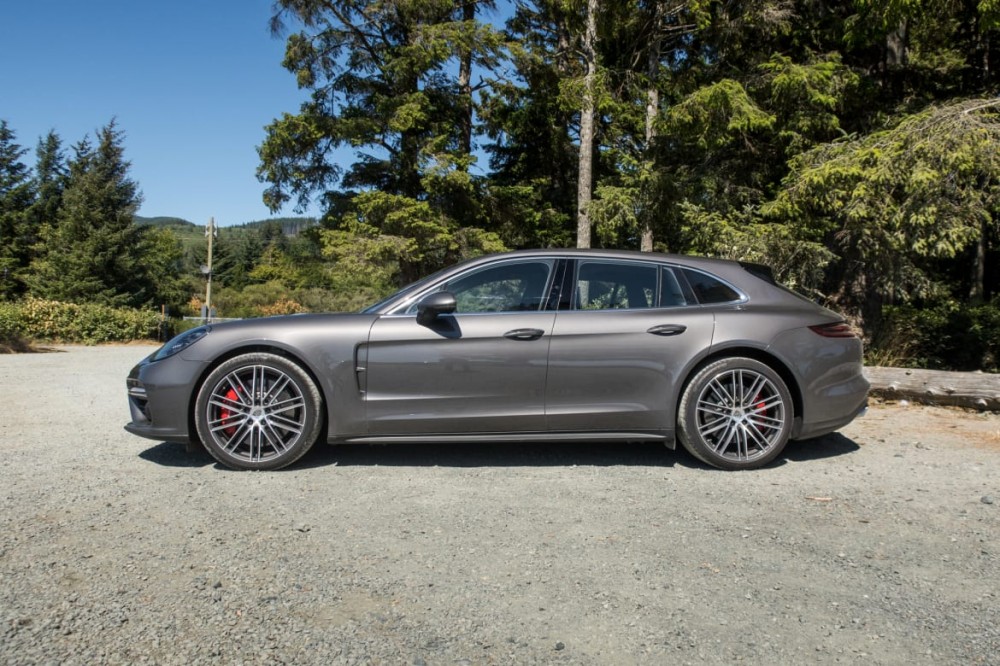
The Panamera is an interesting proposition, priced to compete with the largest, most luxurious flagship sedans around but focused much more on performance. This is reflected in its interior, where there is less backseat room and refinement than you'd find in other vehicles in this strata like the Mercedes-Benz S-Class and BMW 7 Series. That positions the Panamera as a sort of middle ground: a mix of performance, utility and luxury.
Key Differences
The Sport Turismo has a few key differences from regular Panamera models, starting with that elongated roof. Porsche says that everything from the B-pillar rearward has changed. The rear spoiler has also changed positions, moving from the rear of the trunk up to the top of the roof. You don't get that very cool mechanical action you find when the spoiler unfurls on the regular Panamera, but the spoiler is useful in different ways (more on that later).
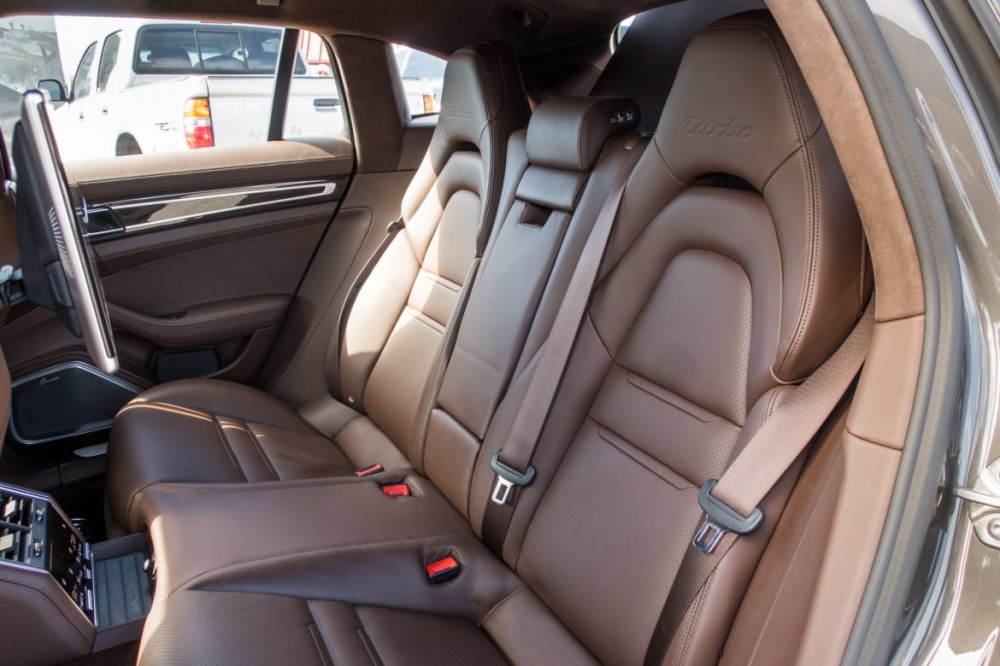
Inside, the Sport Turismo will offer a fifth seat for the first time in what Porsche is calling a 4+1 configuration — an accurate way to describe it because it feels a bit like an afterthought. The fifth seat is elevated from the rear outboard seats, and because all Panamera Sport Turismos include all-wheel drive (the sedan also offers rear-wheel drive), the middle passenger will also be dealing with a very large center floor hump that rises almost all the way up to the level of the seat cushions. It's not the most comfortable place to sit, and fitting three passengers back there won't be a pleasant experience for any of them, but the Sport Turismo's modified shape actually adds headroom to the backseat. The panoramic moonroof also extends back beyond where the passenger's head would be, so you don't have to worry about hitting a bump and having a middle take a sharp knock to the back of the head. Those who don't want a fifth seat but want the wagon styling can opt for a four-seat configuration.
Cargo room is also greater than in the regular body style. It's 18.3 cubic feet for gas models of the Panamera Sport Turismo, though the E-Hybrid has 15 cubic feet due to the presence of a battery pack below the cargo floor.
A Different Kind of Touch Panel
This was my first chance to really test out the Panamera's new center control layout, which debuted when the whole lineup was redesigned for 2017. The previous generation had an extremely busy design, with lots of buttons crawling up both sides of the center console. Panameras, like all Porsches, offer an overwhelming number of options, which means that some models have what seems like 20 buttons — but only 10 of them are filled out.
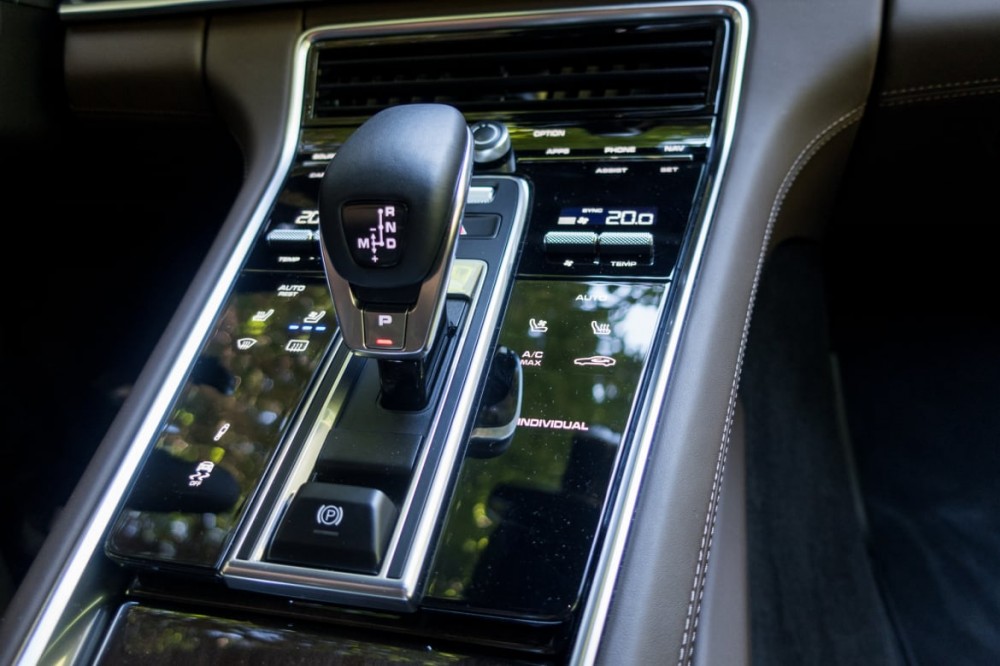
Porsche sought to remedy this by replacing that button-festooned area with one large, glossy black panel. At first glance I groaned, thinking that the controls would be touch-sensitive, but they are not. Activating them requires you to push them down physically like a real button, and resting a hand on one without pushing down won't activate the controls. You may still have to glance down to see where your hand is landing, but at least there won't be any activating of controls by accident, and it looks much cleaner than the previous design.
The Car Is Not the Only Thing That's Fast
Porsche is fond of putting its name in front of everything it makes, and its multimedia and navigation system, Porsche Communication Management, is no exception.
The system has a few things going for it, one of them being infrared sensors around both edges of the touchscreen that can detect when your hand is reaching for the screen (one of the only good features pioneered by Cadillac's CUE system). When it detects that, the menus around the screen quickly pop up. Most touchscreens require you to poke the screen to get the menus to come up or leave them static, which cuts into the usable screen space.
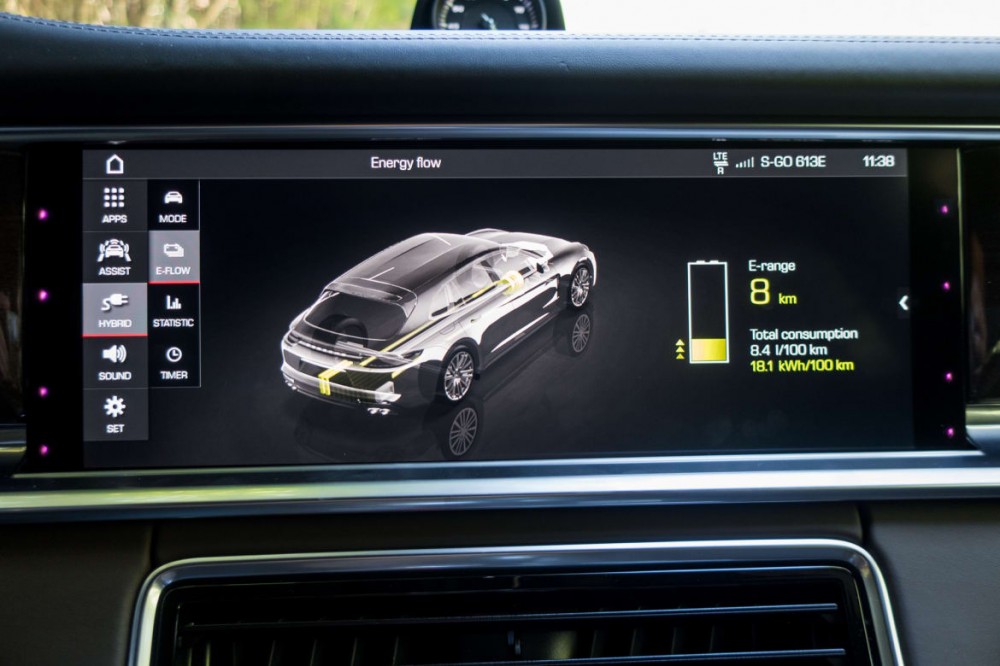
I was disappointed to find out that the system doesn't offer Android Auto (though Porsche reps said they are working on it). My sadness didn't last long, however, because I found PCM to be quite good. The biggest point it has going for it is its speed: Menus open quickly, screens flow from one to the next instantaneously and the design is intuitive.
The E-Hybrid comes with a few unique screens that help manage its functions, including one menu that allows you to schedule charging times to exploit off-peak electric rates (which can also be done through an app). There was one other interesting charging feature I found noteworthy: Porsche says that keeping the battery at a full charge and sitting is unhealthy, so you can enter a time when the car is needed to be at a full charge (say, after going away for a weekend and leaving it at home). The car will automatically raise and lower the charge level slightly to keep the battery healthy, ensuring that it will be at max capacity when needed.
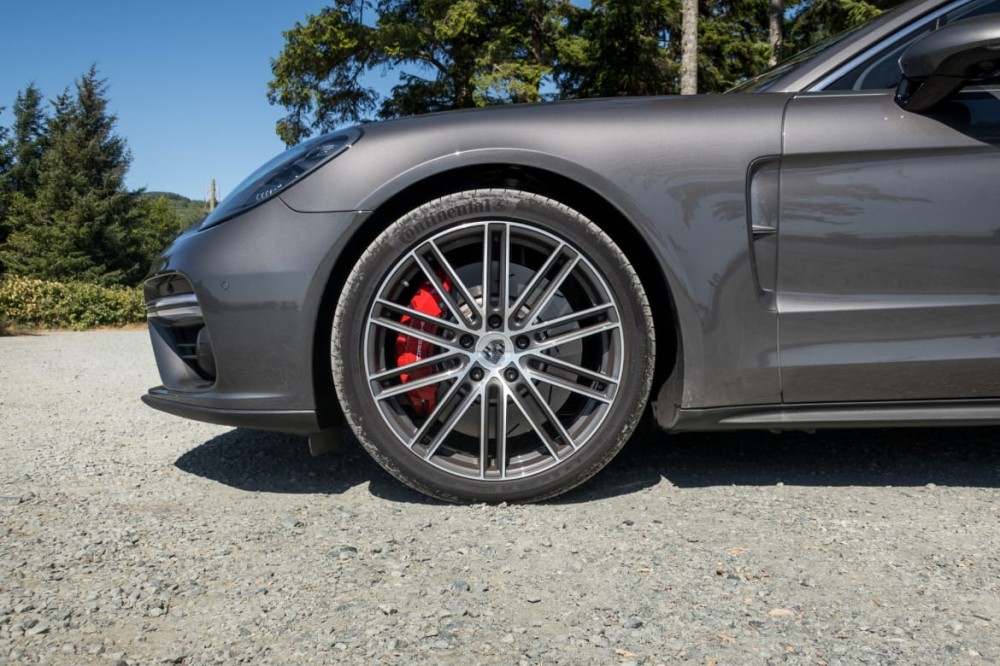
Driving the Turbo
The Turbo comes with a twin-turbo 4.0-liter V-8 that makes 550 horsepower and 567 pounds-feet of torque. Porsche estimates a top speed of 188 mph and a zero-to-60 mph time of 3.6 seconds, which drops down to 3.4 seconds if equipped with the Sport Chrono package that adds launch control. All-wheel drive is standard, as are an air suspension, PDK eight-speed automatic transmission and Porsche Active Suspension Management.
Driving on public roads, it's hard to assess if those figures are accurate — especially in Canada, where I tried to avoid the Mounties because I didn't want to learn the intricacies of international traffic law. (Per company policy, Cars.com pays its expenses for such automaker-hosted events.) But I was able to discern this: It's got more engine than you will ever need, and it pulls from both a standstill and at speed.
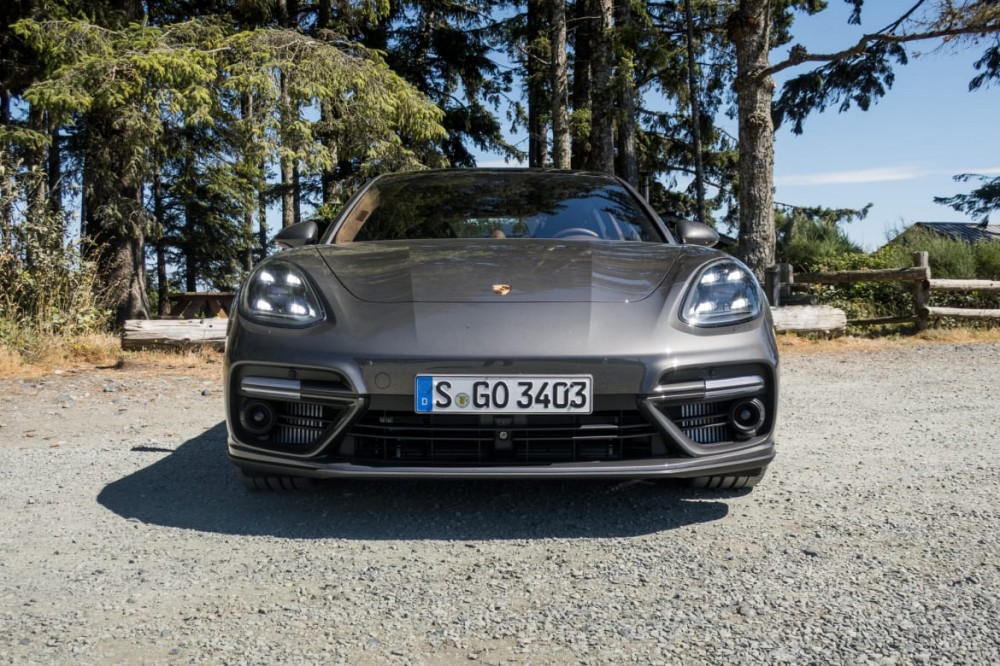
For its size, the Panamera feels agile. Toss it into a corner and you can feel the weight begin to squat down over the rear outside tire, but just as that starts to register with your brain, PASM changes up the damping rates and suddenly the car is flat again. This gives a driver confidence, as does the excellent steering — good weight and, more important, enough feedback to offer a picture of what the wheels are doing underneath you. The Turbo isn't fast only in a straight line; it corners remarkably well for a 4,398-pound wagon.
Fuel-economy figures are not available as of publication, but the Turbo's engine does feature cylinder deactivation to keep those figures up. The numbers will likely pale in comparison to those of the next Sport Turismo I drove — the 4 E-Hybrid.
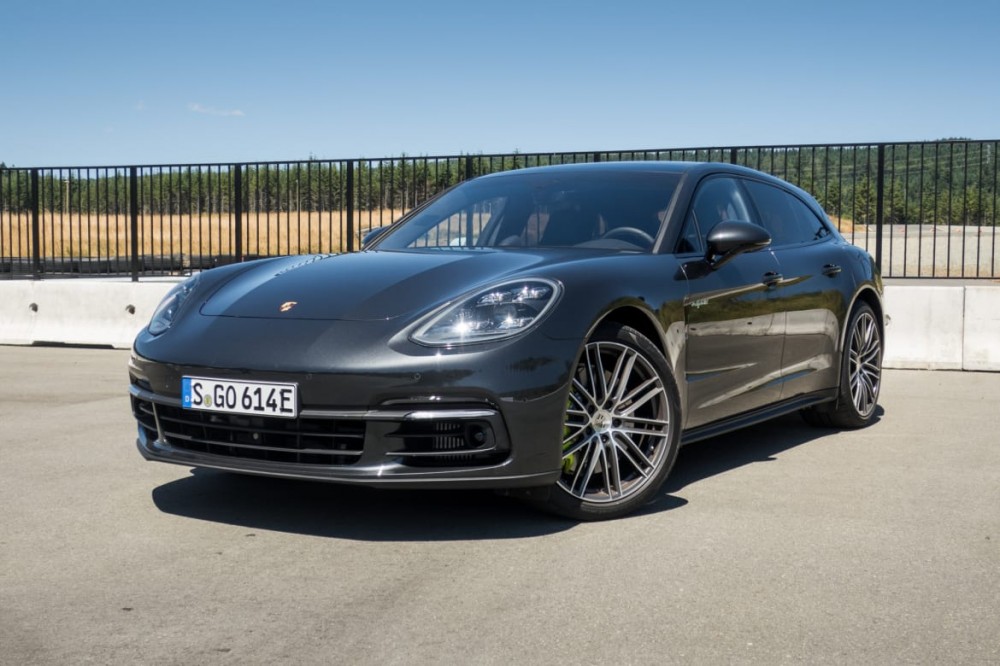
Driving the 4 E-Hybrid
Porsche likes to distinguish its E-Hybrid models with "acid green" accents on the brake calipers, badges and some interior elements. That's a cringe-inducing name for what is basically some highlighter to let folks know that this wagon also runs on electricity.
The 4 E-Hybrid is less powerful than the Turbo, but it's no slouch. It combines a twin-turbo 2.9-liter V-6 gas engine with an electric motor, and the two produce a total output of 462 hp and 516 pounds-feet of torque – and all of that torque is available pretty much instantly. Note that the Panamera 4 and 4S, equipped with turbocharged versions of the gas engine alone, provide less output: 330 and 440 hp, respectively.
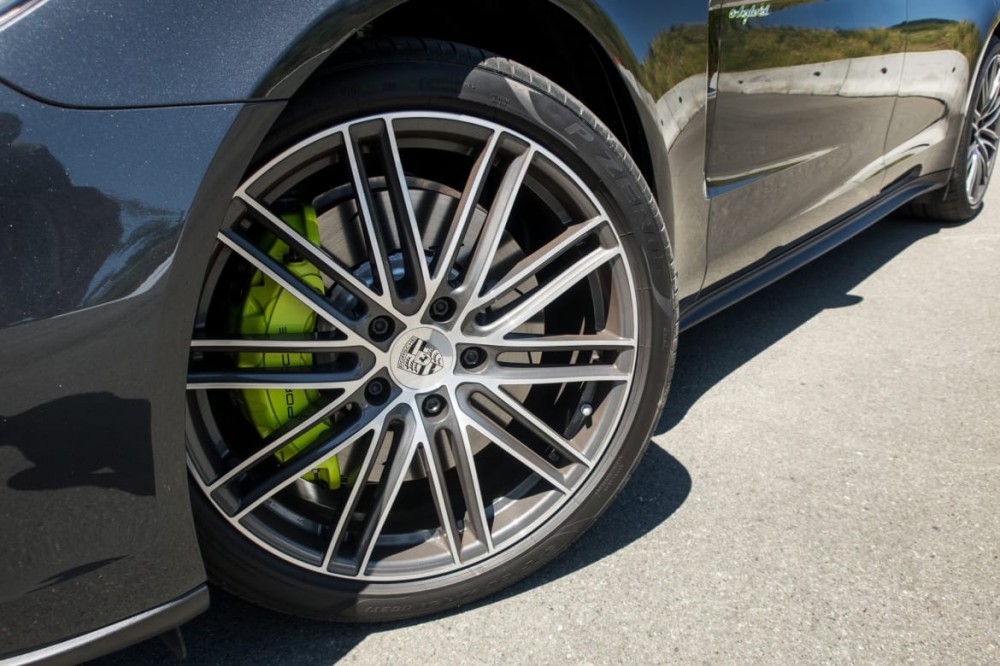
All of the hybrids Porsche makes are now of the plug-in variety. In the case of the Panamera 4 E-Hybrid Sport Turismo, that means you get an estimated 31 miles of electric range up front on a full charge, according to Porsche. Switching between the 4 E-Hybrid's four drive modes (E-Power, Hybrid, Sport and Sport Plus) from a small dial on the steering wheel varies the role of the electric motor. E-Power tries to hold the car in electric mode as much as possible, and the electric motor can drive the car up to 86 mph on its own. Dig your foot in hard and the gas engine will kick on, but it takes quite a bit of exuberance to get to that point.
The most efficient mode is actually Hybrid mode, designed to figure out the optimal point to switch the gas engine on, whether it's to drive the wheels or charge the battery a bit. In Hybrid mode, you can choose two other settings as well: E-Hold, which will keep the battery fill the same, or E-Charge, which will prioritize recharging the battery during normal driving.
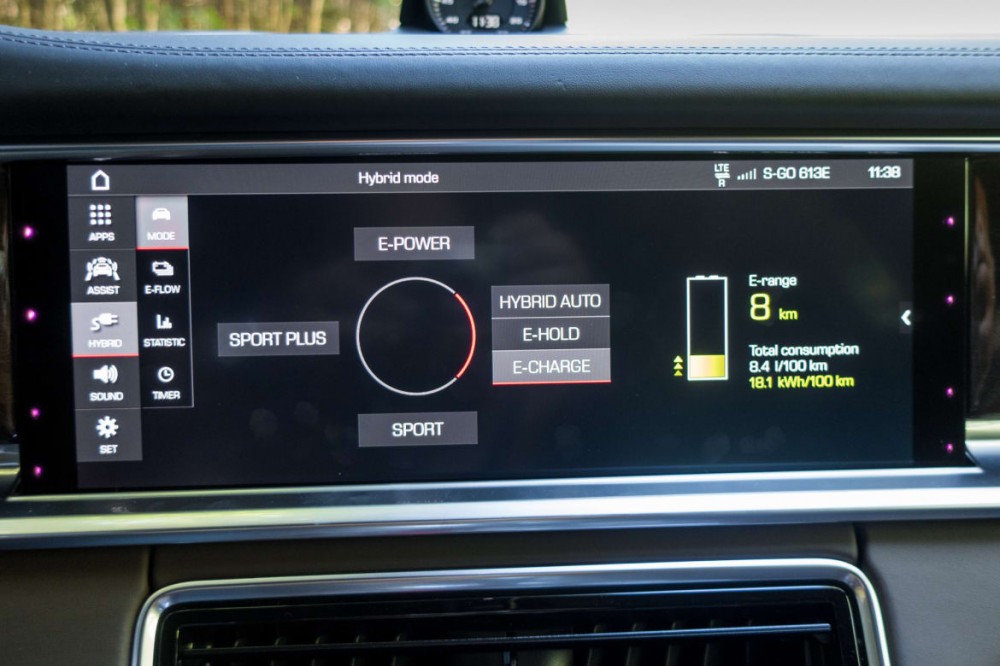
Sport and Sport Plus have different priorities entirely. In both modes, the gas engine will run constantly and the throttle mapping is more aggressive (along with other changes, including firming up the suspension). In Sport Plus, the gas engine will run even more aggressively to get charge into the battery as fast as possible so the car can use that energy in bursts to enhance performance.
In some ways, this led me to prefer the 4 E-Hybrid to the Turbo. The Turbo has more power and a higher performance ceiling, but the 4 E-Hybrid is fun in its own right with immediate burst thanks to its hybrid drivetrain. The 4 E-Hybrid also comes with PASM and air suspension standard, so it's not far off in the handling department.
Like the Turbo, fuel-economy figures for the 4 E-Hybrid are not yet finalized.
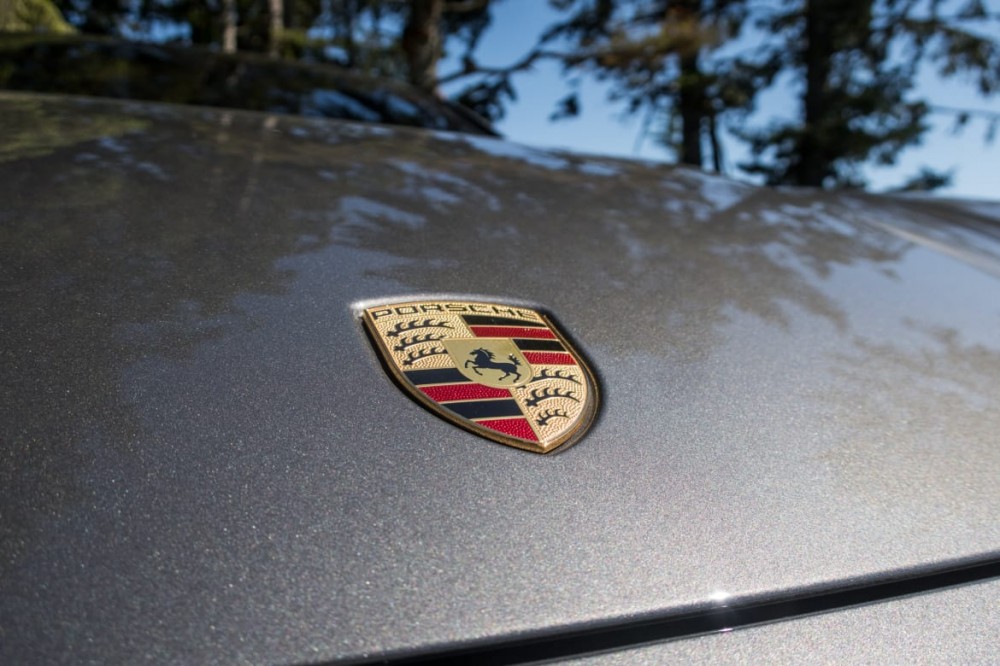
Pricing
Usually we call this section "value," but in the case of these cars, there isn't really value — they are expensive machines.
Both of the cars piled on the options. The 4 E-Hybrid model starts at $105,050 (including a $1,050 destination charge), but the vehicle I tested added 19 packages and options to push the final price up to $148,950. The Turbo is the same way, starting at $155,050, but our test vehicle with options was $192,520. That is around $40,000 in options for each vehicle.
For that money, you get a standout performer; the Panamera can drive circles around the larger luxury barges, but even the bigger Sport Turismo doesn't offer the same backseat comfort or size of the competition. I don't really mind, though, because if I got one of these, there's only one seat that I'd gun for every time — behind the wheel.
